The massive popularity of 1996’s Pokemon Red and Blue has cast a long shadow over the Pokemon series. Much of the fanbase believes in the superiority of the original 151 monsters, and given 2016’s Pokemon GO phenomenon — which only had the initial cast — who can argue? With the newest Pokemon games, Sun and Moon, Game Freak plays nice with that reality, inviting fans on a holiday that celebrates (yet also reinvents) what people love about pocket monsters.
In Sun and Moon, you play as an 11-year-old boy or girl who moves from Kanto, the locale of the original games, to a tropical paradise known as Alola. It’s a small yet telling narrative decision that illuminates the pitch Game Freak is making toward OG fans: What you loved isn’t being discarded; it’s just getting a twist.
The Alola region is composed of islands with different environments and climates, allowing many classic Pokemon to now have “regional variants”. That fire Pokemon you loved as a kid? It’s an ice Pokemon now, with a way cooler design to boot. Remember that amazing monster that used a bone as a weapon? It’s a GHOST now. And if you don’t know the first 151? That’s OK, you still get the more awesome versions of beloved creatures from the get-go, all while exploring an virtual Eden. It’s a smart compromise that makes the old new again.
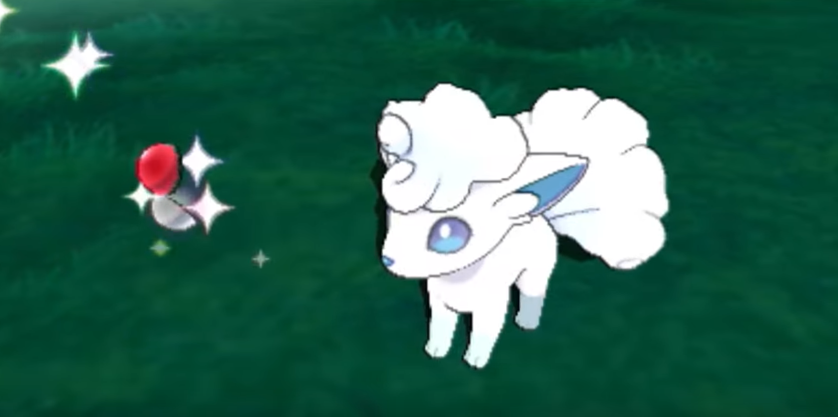
The Alola region presents Pokemon-training as part of deeply-rooted tradition. In older games, it never quite made sense for little kids to become dog-fighting nomads. In Sun and Moon, that journey is explicitly a coming of age ritual, and it has been performed through generations of people. Picking a starter monster and acquiring a rival feel less like a Pokemon convention and more like a cultural practice based in history.
That grounded premise, coupled with Pokemon Sun and Moon’s attention to detail, makes the world feel alive. You can hear Pokemon chirp and croak. They hang from trees and scutter about as you make your way through tall grass. Some computer-controlled characters still set out bowls, beds and toys for their own house-bound pets. The more professional ones use a variety of monsters to help them with day-to-day jobs, like construction or police work. Pokemon don’t feel grafted on here. They feel like a meaningful part of an actual society.
As always, the bulk of these new Pokemon games is spent fighting through turn-based battles. Some start from random encounters. Others you initiate against trainers such as yourself. In the wild, you can capture more creatures to join your starter, with up to six monsters making up a team. Each creature has strengths, weaknesses and a moveset, along with an overarching elemental affinity. With over 700 Pokemon in the roster, hundreds of potential moves and 18 elemental types, even veterans might have a hard time keeping track of it all. Sun and Moon lend a helping hand here: Once you use a move against a foe, the game’s menu will remind you of effectiveness before you select anything.
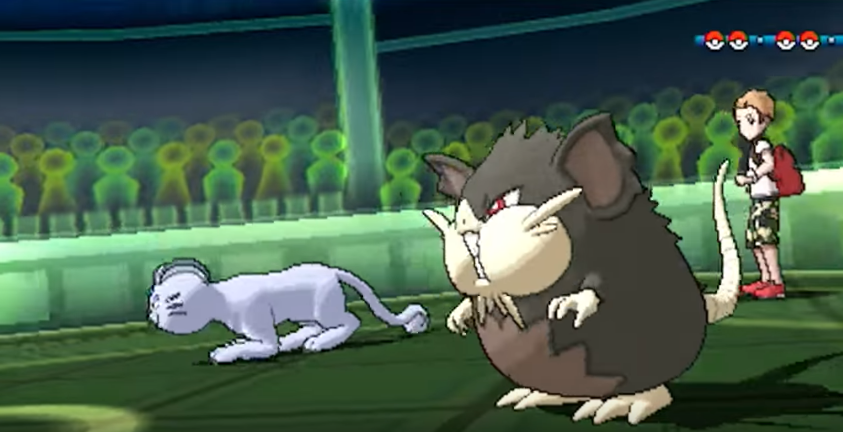
Sun and Moon are structured around “trials” scattered throughout four islands, and these challenges might require you to do anything from photography to acing a quiz. Inevitably all trials incorporate battles, but pulling away from the usual gym framework revitalises Pokemon. Instead of doubling down on the seriousness of a major battle at the end of a gauntlet, as prior games did, trials often amused and entertained me with their antics. I never knew what to expect, which makes trials infinitely more memorable than gyms.
The trial arrangement makes Sun and Moon more streamlined, too. You always have a clearly defined path and purpose during your travels. In practice, Sun and Moon opt for more regular battles of note against important characters, rather than endlessly throwing random combative NPCs against you. The beats you come to expect from a Pokemon game, like the inevitable showdown against an evil collective, still happen — but Sun and Moon get to the point quicker, and with more charm. The new games ooze a confident charisma that’s noticeable in everything, from rainbow-coloured text, to the jokester Pokedex with a mind of its own.
In other games, the go-to “strategy” against AI was to grind your Pokemon, so as to overwhelm through sheer stats. In Sun and Moon, it is not enough to over-level your creatures, or even to use the correct move type. Trainers use more items that heal HP or status conditions, and in the wild, monsters often call for “help”, so that more Pokemon can join them during battle.
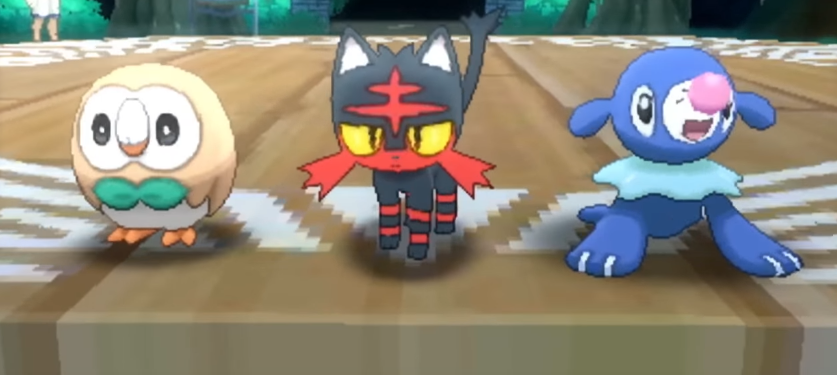
I’ve played Pokemon games since Red and Blue and have never had my team faint or come close to collapse as often as I did in Sun and Moon. The new games forced me to use actual tactics against the computer. For once, the single-player in a Pokemon game made me care more about movesets, turn order and team make-up. It’s a thrilling change that highlights the complexity underlying a series that is jokingly referred to as a children’s game.
Sun and Moon also introduce a few new asides, though I was disappointed by their lack of consequence. For instance, you can now take photographs of wild monsters, a la Pokemon Snap, but the scope is limited and the scoring for creativity is terrible. All the photographic feature wants you to do is to take close-up pictures where the creature is centred. Short animation loops means that once you’ve snapped a few pics, there’s not much to do any more. Boring! Worse, despite actively looking for photography spots, I only found a few in my dozens of hours of playtime.
“Festival Plaza” introduces a social hub where real trainers can purchase items and interact with one another, Miitomo-style. While the presentation is nice, there isn’t much to do. “Pokemon Pelago” will likely prove to be the most useful of the bunch, as it provides players with private islands where Pokemon can hang out, collect items, train and even encounter wild monsters. Pelago Island development is tied to the number of Pokemon you own, which is a sharp way of motivating players to capture more creatures. Even so, I found myself repeatedly trying these features for the sake of review, and none of them felt fun. Even the hyped Z-Moves featured in much of the advertising left me cold: Sure, they’re flashy, but they’re just souped-up moves. Nothing groundbreaking.
Instead, the additions I appreciated the most were subtle, quality of life details. Pokemon now warns you when you’re about to aggro an NPC into battle. Instead of being useless permanent moves, HMs have been replaced with “charges” that let you call a Pokemon to aid you with stuff like surfing and flying. If your buddy gets a status ailment during battle, instead of wasting an item you can just perform some battle aftercare to treat their illness. While none of these inclusions are revolutionary, they work together to bolster the solid battle mechanics.
While the systems at the heart of Pokemon are largely familiar, Sun and Moon spark plenty of intrigue. After finding an unknown monster from a different dimension, you set out to find out more about where it hails from. This is how Sun and Moon introduce the stark and mysterious ultra beasts, whose motives and even nature — are they Pokemon? — are unclear. Sun and Moon are the rare Pokemon games where I cared about uncovering the story, and I say this despite the simplistic and mawkish writing.
On a smaller scale, I always felt motivated to discover more Pokemon, curious to see if any of my favourites had been revamped. Alolan forms such as Dugtrio with long, luscious hair, or an Exeggutor with a hilariously long neck show Game Freak clearly having fun with Pokemon designs. The fully-new Alola-exclusive Pokemon are also well-designed. Creatures like haunted sandcastles and toucan-inspired Pokemon take Alola’s setting seriously, but few got me excited in the same way the regional variants did. I caught myself keeping teams of mostly old Pokemon until I made an effort to focus on the new cadre. To Alola’s credit, I’ve learned to love them, too. Shout out to Rockruff and Bewear, two Pokemon that are cuter than they have any right to be. I’ve spent more time than I care to admit trying to engineer a team that’s both competent and awesome.
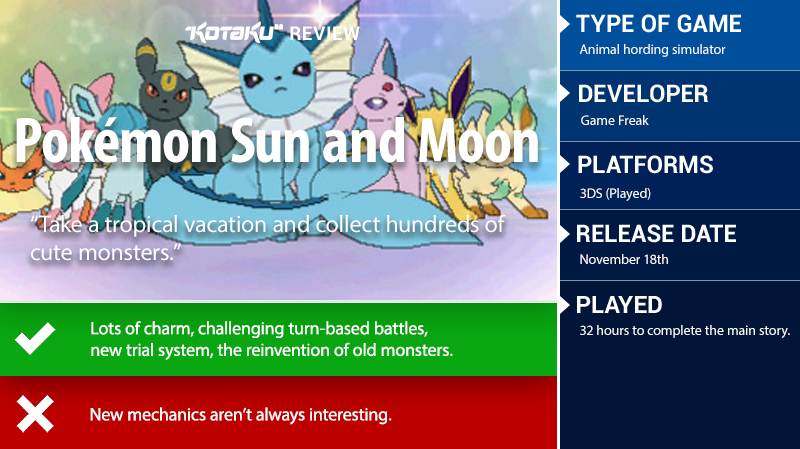
Earlier this year, I spoke to lead Pokemon developer Junichi Masuda about the legacy of Red and Blue, and asked him whether or not Game Freak felt pressure to cater to fans who believe the originals are the apex of the series. Masuda laughed, acknowledged the tension, and told me that of course he didn’t want to disappoint anyone, regardless of whether it was a newbie or veteran. “We want to live up to the expectations of the fans,” Masuda said. At the time it seemed like an obligatory answer, but after playing through Sun and Moon, I see that it was not just an idle response. Sun and Moon pull off a delicate juggling act.
For 20 years now, Pokemon games have presented fantasies where people live, battle and grow alongside powerful monsters. In Pokemon Sun and Moon, that wistful reverie invites you take a holiday, leave your worries behind and grab yourself a lei. As it happens with all good holidays, Pokemon found itself again.
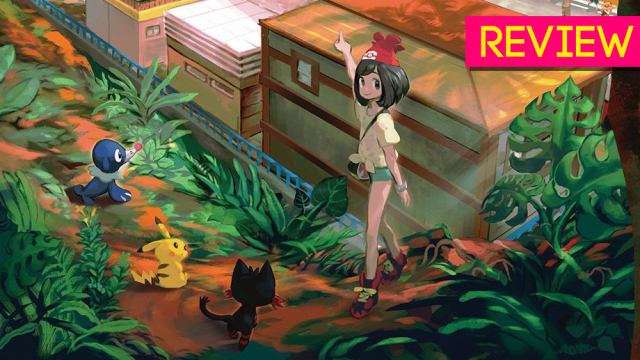
Comments
18 responses to “Pokemon Sun And Moon: The Kotaku Review”
I just wish that they would have a prompt at the beginning asking “Have you played Pokemon games before” so you don’t have to sit through the endless cut-scenes and tutorials.
I have been playing Pokemon for 20 years; give me a rundown of the plot, a QUICK rundown of the new mechanics and let me be on my way.
This game felt by far the worst in terms of how much crap you had to sit through to get to the real meat of the game.
Maybe at the start of the game they could say something like “How old are you” and if you are older than 6 it doesn’t waste your time teaching you how buttons work.
Exactly. My biggest grief with the game is how long and tedious the start is. Just give me my starter and let me go out on my own.
I’ve found the shift to a more narrative friendly experience pretty refreshing. It feels like it’s making an effort to be more cinematic and story driven. The previous games had a lot of trip-wire events. You cross a line and an NPC walks on from the side of the screen to spam you with dialogue then walk away. In Sun and Moon it feels more like a RPG. Coupled with the use of camera rigs instead of fixed point perspectives it makes the game feel less mechanical and rigid.
At the same time it feels like they didn’t sacrifice the sandbox side of the game to get there.
I really echo this, I’ve been playing pokemon games since third gen, (later went back and went through the early ones) but the narrative in Sun and Moon is so amazing, I have repeatedly been audibly laughing in this game which is more than I can say for pretty much any other game I’ve played recently. They’ve been slowly getting better written but in one game they’ve leaped from a functional script to one that is sublime. I’m not sure how enjoyable it will be to do things such as Nuzlockes given how text heavy it is but I am thoroughly enjoying my initial playthrough.
For reference I’ve just beaten the second Kahuna
I have found this game to be unbearable due to having more cutscenes/dialog than Metal Gear Solid 4.
Have you actually completed it or is this more of an early impressions?
Early impressions. I’m not super far but once I unlocked most of the functionality it eased up on the really annoying scenes. Like you said above there’s a lot of hand holding so I suspect the unnecessary/annoying scenes are going to sour a lot of people on the idea before they get to the stuff with more substance. Hopefully if you power through the ‘you got an item, here’s a play about how to use it, oh look, there’s another item…’ stage you’ll find it more enjoyable.
That said I stand by my comment. I think for any faults in the story they’re doing a better job delivering it. The same script playing out on Gen III would be frustrating and clumsily executed instead of just frustrating.
I am actively avoiding using pre-existing pokemon in my playthrough (for the time being anyway) as I feel I wouldn’t be doing the game justice if I used the same or similar team I use every generation.
Things I love about the game (half way through 3rd island)
-The area design. Finally moving away from a very grid based map and allowing some more creativity with elevation, terrain, direction etc.
-Mounts. Begone ye HM slave of yesteryear. When I first saw the breakable rocks early on I thought my rock smash birdy was going to be useful, then I got tauros and had a “Fuck yeah!” moment. Later again the new itemfinder surprised and delighted me. I will miss Surf the move and teleport (which is largely useless now) but I can accept that things have changed for the better.
-Popplio. Say what you want about the drama surrounding the seal, it’s moveset is incredibly versatile. I was not long into the game and I had Acrobatics, Hidden power – Thunder, Dazzling Gleam and Scald for some extremely respectable type coverage.
-Story pacing. Adding challenges as mini gyms followed by the end of zone gym spaces out rewards wonderfully, meaning you always have something to look forward to in the near future. There is also enough intrigue so far.
-Team Skull. Look, we all hate this stereotype wigga but I’ll be damned if it isn’t placed squarely in so bad it’s good territory. Bad rhyming couplets for rap and the fact that most NPCs pay them no attention while they are around.
-All the little quality of life changes that make you go “hmm, that’s handy”
Using the PC sends you straight to the move screen and you can make NPC trades directly from the PC. Two very pleasant surprises.
This was such a pleasant surprise! No more having to go back to a PC to get a pokemon and then slog back to the NPC who wants the trade.
Team Skull is hilarous. “Get Figy with it”
Questions:
What is this thing or place (the Festival Plaza has it I think) that helps with eggs?
I found the nursery but never got into the breeding stuff.
Same with the berries. I found the berry farm but I can’t do anything?
I’m aware of the laundry lists of leaks and everything (story spoilers aren’t really an issue) but I’m interesting in how many pokemon need trading to evolve. So far I have three of the four Kanto ones, for example. I doubt any Alola ones need to do this but not sure.
The rock pools – after I exhaust the pearls/etc and whatever pokemon are in them, how long until they re-spawn?
Speaking of water battles…
MAGIKARP SUMMONED A GYARADOS TO BATTLE ME. WE PUSHED HIM TOO FAR.
No trade evos that I have found either. There are though 2 region specific evolutions. Charjabug only evolves when in vast poni canyon, crabrawler evolves likewise in the area just before you get to the league (place where it is hailing).
I think there are 2 or 3 happiness evos from the new lineup as well
Only the females evolve for one line.
yep, for Salazzle
I think you hatch eggs using the Nursery, but level up Pokémon in Pokémon Pelago.
Berries are also done in Poké Pelago.
-Breeding is done at the ranch/nursery.
-Everstone is gained through gameplay and also…
-Both Everstone and Destiny Knot can be purchased at the battle royal (for large sums of BP)
-Fletchinder line exists for flame body
-Ditto exists for Ditto things
-No Macho Brace as yet and probably wont be in favour of the training items that can also be purchased at the battle royal place, giving I believe 8 EV points per kill for a stat corresponding to the item you are using.
-EV training is best done via SOS battle chaining (when a mon calls for help)
-Enduring orb (from marts for cheap) when used in battle increase chance of help being called
-Each time a mon is killed in an SOS battle, you gain a multiplier for the EV you will earn at the end
-Pokerus is still a thing
-EV training item + Pokerus + chain of 7 in battle will cap out an EV stat
-Without Pokerus it takes a little longer but is still rather fast
-Hatch 20 or so eggs then visit the NPC at the battle tree and you will unlock the ability to check IVs for those of us who will go down that rabbit warren and while I haven’t yet unlocked him, as I understand it you then gain the ability to check directly from the PC rather than having to head out to a remote island with 6 you want checked.
Oh also, scan your QR codes (open menu, go to the second screen)
https://imgur.com/a/EFOqs#M6ekcpW
At 10 scans of unique mons you get to “scan the island” which will, for 1 hour, spawn a rare pokemon somewhere on your current island (ideally wait till you have fly available) This mon will likely not be available in the game through regular means. Last night I got a Togekiss for example and previous nights a Conkledurr and an Axew. Other friends have gotten a Luxray and swinub so there is a large variety of stuff up for grabs. You gain a charge of scan every 2 hours so you get a new mon every 20 hours.